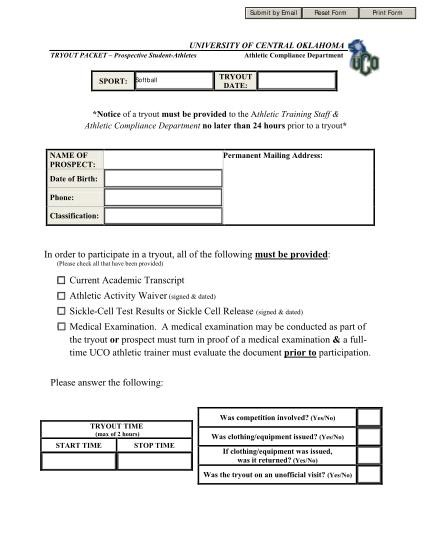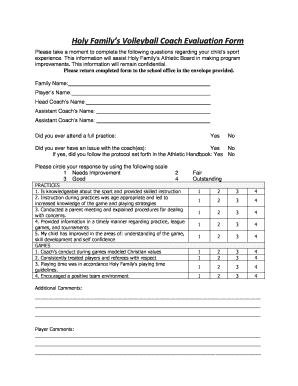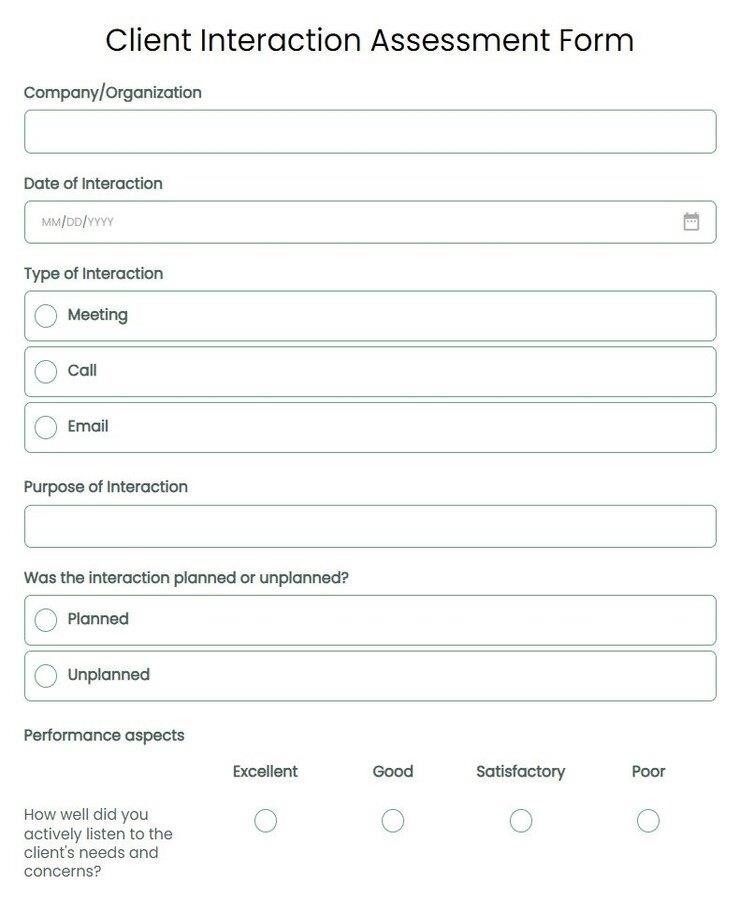
Volleyball Tryout Evaluation Form⁚ A Complete Guide
This comprehensive guide explores the creation and utilization of volleyball tryout evaluation forms. Discover how structured evaluations streamline player assessment, ensuring efficient identification of talent and skill levels. Learn about key skills, physical attributes, and mental aspects evaluated, and how technology enhances the process.
Importance of a Structured Evaluation
A structured volleyball tryout evaluation form is crucial for several reasons. Firstly, it ensures fairness and consistency in assessing players. Using a standardized form prevents subjective biases and ensures all athletes are evaluated using the same criteria. This allows for objective comparisons, leading to more accurate selections. Secondly, a structured approach saves time and resources. The organized format streamlines the evaluation process, allowing coaches to efficiently assess numerous players. Pre-defined categories and scoring systems prevent wasted time on disorganized note-taking. Finally, a well-designed form improves the overall tryout experience. The clear criteria and organized process create a professional atmosphere, demonstrating respect for the athletes’ time and effort. This contributes to a positive and efficient tryout experience for all involved.
Key Skills Assessed⁚ Serving, Passing, Setting, Hitting, Blocking
A comprehensive volleyball tryout evaluation form must assess fundamental skills. Serving accuracy and power are critical; consistent placement and aggressive serves are key indicators of a strong server. Passing technique and consistency are equally vital, with evaluations focusing on platform stability, precise targeting, and efficient movement. Setting precision and consistency are crucial; evaluators should assess the setter’s ability to deliver accurate and consistent sets to hitters. Hitting power, accuracy, and technique are paramount; the form should assess the player’s ability to terminate points effectively. Finally, blocking effectiveness and strategy are essential; evaluators should note blocking techniques, timing, and court coverage. These five core skills provide a robust assessment of a player’s overall volleyball capabilities.

Assessing Physical Attributes⁚ Speed, Power, Agility, Balance
Beyond skill, physical attributes significantly impact volleyball performance. Speed, crucial for quick court coverage and reaction time, should be evaluated through timed drills or game observation. Power, essential for powerful serves and hits, can be assessed using jump tests (vertical jump height) or through observation of hitting power during drills. Agility, reflecting the ability to change direction quickly, is vital for defensive plays and offensive maneuvers; shuttle runs or cone drills can effectively measure this. Balance, often overlooked, is crucial for maintaining stability during jumps, landings, and quick movements. A simple balance test, such as standing on one leg, can provide valuable insights. The evaluation form should incorporate these assessments, providing a holistic view of a player’s physical capabilities, and how these attributes contribute to their on-court effectiveness. Quantitative data alongside qualitative observations will create a well-rounded profile.
Evaluating Mental Aspects⁚ Communication, Teamwork, Game Awareness
A successful volleyball player possesses strong mental attributes as much as physical skills. Effective communication is paramount; evaluators should assess vocal cues, non-verbal communication (body language during drills and games), and the clarity of instructions given and received. Teamwork is critical; observe players’ interactions during drills, noting their willingness to help teammates, their response to successes and failures of the team, and their overall collaborative spirit. Game awareness encompasses strategic thinking and anticipation. Does a player understand their role within the team’s strategy? Do they anticipate opponents’ moves and react accordingly? Do they adjust their play based on the flow of the game? These observations, though qualitative, are vital for evaluating a player’s overall potential. Include specific examples in the evaluation form to support the assessment, making the feedback constructive and actionable.
Utilizing Technology for Efficient Evaluation
Technology significantly streamlines the volleyball tryout evaluation process. Mobile apps like SkillShark allow coaches to score athletes directly on tablets or smartphones, eliminating the need for manual data entry and paper forms. This real-time data collection ensures accuracy and reduces post-tryout workload. The web app functionality of such platforms further enhances efficiency, allowing coaches to easily access, sort, and analyze the collected data to generate comprehensive reports. Digital forms offer customizable templates, enabling coaches to tailor evaluation criteria to specific needs and skill levels. Furthermore, digital platforms often facilitate easy sharing of results with players and team management, fostering transparent communication and feedback. The integration of video recording capabilities allows for detailed post-tryout analysis of player performance, providing valuable insights for coaching and player development. Embracing these technological advancements offers a more efficient and data-driven approach to evaluating player talent.
Sample Evaluation Form Structure and Content
A well-structured volleyball tryout evaluation form typically begins with sections for player identification, including name, age, contact information, and playing experience. Subsequent sections focus on skill assessment, often utilizing a rating scale (e.g., 1-5) for various skills such as serving accuracy, passing consistency, setting precision, hitting power and placement, and blocking effectiveness. Specific drills or tests performed during the tryout should be clearly listed, allowing for a detailed record of each player’s performance in each area. The form should also incorporate space for assessing physical attributes like speed, agility, vertical jump, and reaction time. Crucially, a section dedicated to evaluating mental aspects, including communication skills, teamwork, and game awareness, provides a holistic view of the player’s capabilities. Finally, the form should include a summary section for overall assessment and coach’s comments, offering a concise overview and personalized feedback. Providing space for a signature and date ensures the form’s validity and facilitates record-keeping.
Benefits of Using a Standardized Form
Employing a standardized volleyball tryout evaluation form offers numerous advantages. Firstly, it ensures consistency and fairness in evaluating all players, eliminating subjective biases that might arise from informal note-taking. The structured format allows for a comprehensive assessment of various skills and attributes, providing a detailed picture of each player’s strengths and weaknesses. This detailed information simplifies the comparison of players, making the selection process more objective and efficient. A standardized form also facilitates efficient data collection and analysis, enabling coaches to easily identify trends and make informed decisions based on quantifiable data. Furthermore, the use of a pre-designed form saves valuable time during and after the tryouts, reducing administrative workload. Finally, a standardized form improves communication and transparency, allowing coaches to share evaluation results with players and other stakeholders in a clear and consistent manner. The overall result is a more streamlined, efficient, and fair tryout process.
Free Downloadable Templates and Resources
Numerous websites and online resources offer free downloadable volleyball tryout evaluation form templates. These templates often come in various formats, including PDF and MS Word, allowing for easy customization and printing. Many templates provide pre-designed sections for assessing key skills such as serving, passing, setting, hitting, and blocking, as well as physical attributes like speed and agility. Some also include sections for evaluating mental aspects such as communication and teamwork. The availability of these free templates eliminates the need for coaches to create forms from scratch, saving them considerable time and effort. Utilizing these readily available resources ensures a standardized and efficient evaluation process. Remember to check for templates that align with your specific needs and the age group of the players being evaluated. By leveraging these free resources, coaches can focus on observing player performance rather than administrative tasks.
Customizing the Form to Specific Needs
While readily available templates provide a solid foundation, customizing a volleyball tryout evaluation form to meet specific needs is crucial for accurate player assessment. Consider the age and skill level of the athletes. A form for youth players will differ significantly from one designed for college-level tryouts. Adjust the scoring system to reflect the expected skill level; a scale of 1-5 might be appropriate for younger players, while a more nuanced scale might be needed for advanced athletes. Incorporate specific drills or skills relevant to your team’s playing style or coaching philosophy. Include space for qualitative observations beyond numerical scores. Note a player’s attitude, teamwork skills, and coachability. Personalize the form with your team’s logo and contact information. Ensure the form’s layout is clear, concise, and easy to navigate for efficient data collection during the tryout. Regularly review and update your form based on feedback and evolving needs to ensure its ongoing effectiveness in identifying suitable players.
Data Analysis and Report Generation
Efficient data analysis is key after a volleyball tryout. Manually compiling results from numerous paper forms can be time-consuming and prone to errors. Digital forms, however, offer streamlined data collection and analysis. Utilize spreadsheet software to input scores and generate summary statistics, such as average scores for each skill and overall rankings. Visualizations like bar charts or scatter plots can effectively highlight individual player strengths and weaknesses, facilitating informed decision-making. Consider using specialized sports management software that automates data entry and provides advanced analytical tools. These tools can generate comprehensive reports detailing player performance across various skills, allowing for a more in-depth evaluation. Ensure data privacy and confidentiality; anonymize player data in reports shared beyond the coaching staff, adhering to all relevant regulations. The ultimate goal is to transform raw data into actionable insights to select the best players and tailor training plans.
Legal Considerations and Waivers
Before conducting volleyball tryouts, carefully consider the legal implications and ensure you have appropriate waivers in place. Include a clear and concise waiver that participants (or their guardians, if minors) must sign, acknowledging the inherent risks involved in athletic activities. This waiver should explicitly release the organizers and coaches from liability for injuries sustained during the tryouts, except in cases of gross negligence or willful misconduct. Consult with legal counsel to ensure your waiver complies with all applicable laws and regulations. State clearly that participation is voluntary, and that individuals may withdraw at any time. Privacy is crucial. Inform participants how their personal data will be collected, used, and protected, complying with data protection laws (like GDPR or CCPA). Maintain confidentiality of evaluation results. Only share relevant information with those directly involved in the selection process. By addressing these legal aspects, you create a safe and legally sound environment for your volleyball tryouts.
Post-Tryout Communication and Feedback
Effective communication after tryouts is vital. For those selected, promptly send acceptance notifications, outlining team expectations, practice schedules, and upcoming events. Provide clear instructions on next steps, such as equipment requirements or team fees. For those not selected, offer constructive feedback. This might involve a brief summary of their performance, highlighting both strengths and areas for improvement. A personalized email or phone call demonstrates respect and professionalism. Avoid generic rejection emails; instead, tailor your message to each individual, acknowledging their effort and potential. Suggest specific drills or training areas to focus on for future tryouts. Maintain a positive and encouraging tone, even in negative feedback. This fosters goodwill and leaves a lasting positive impression. Remember, your post-tryout communication reflects your organization’s values and professionalism.
